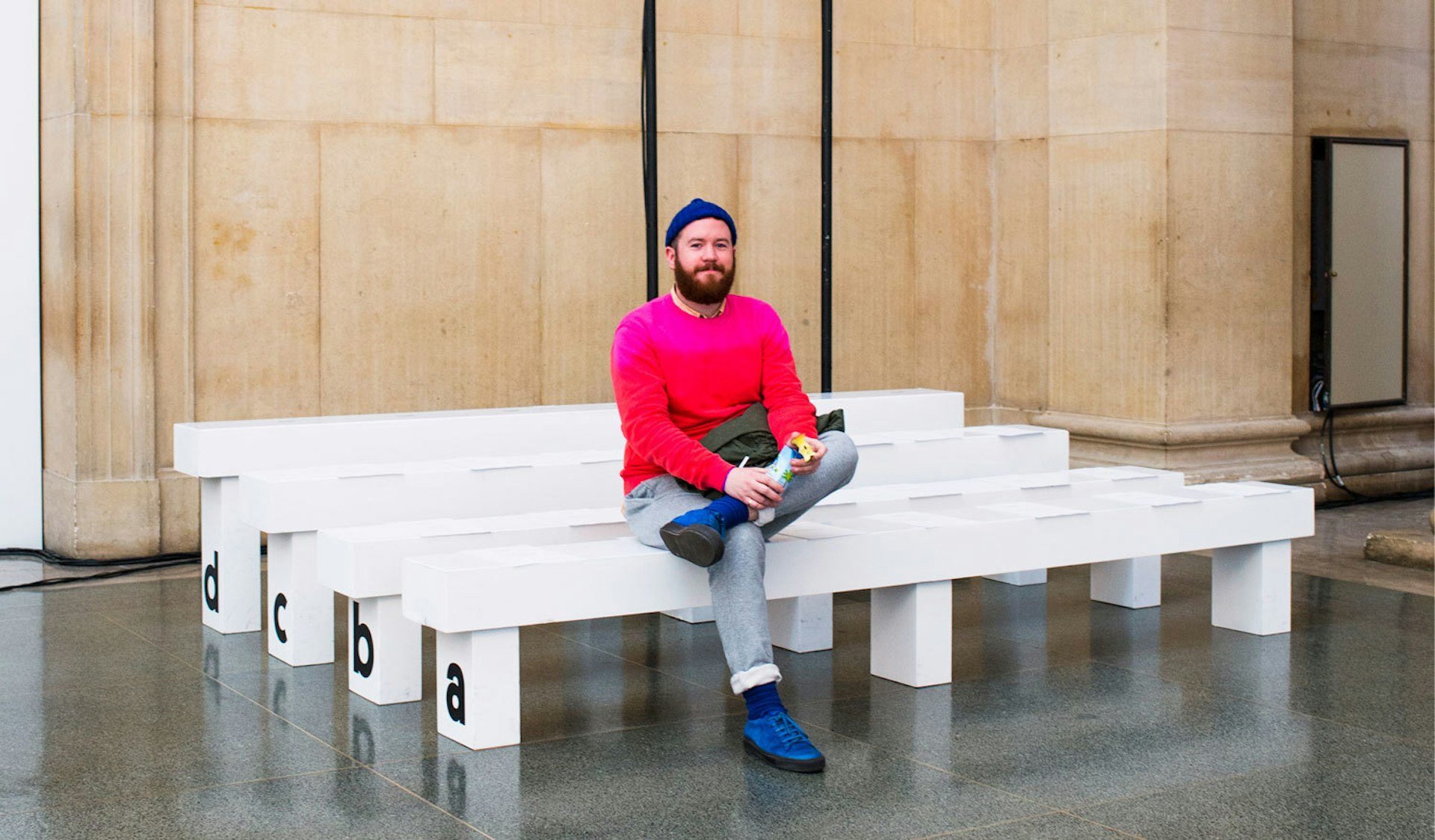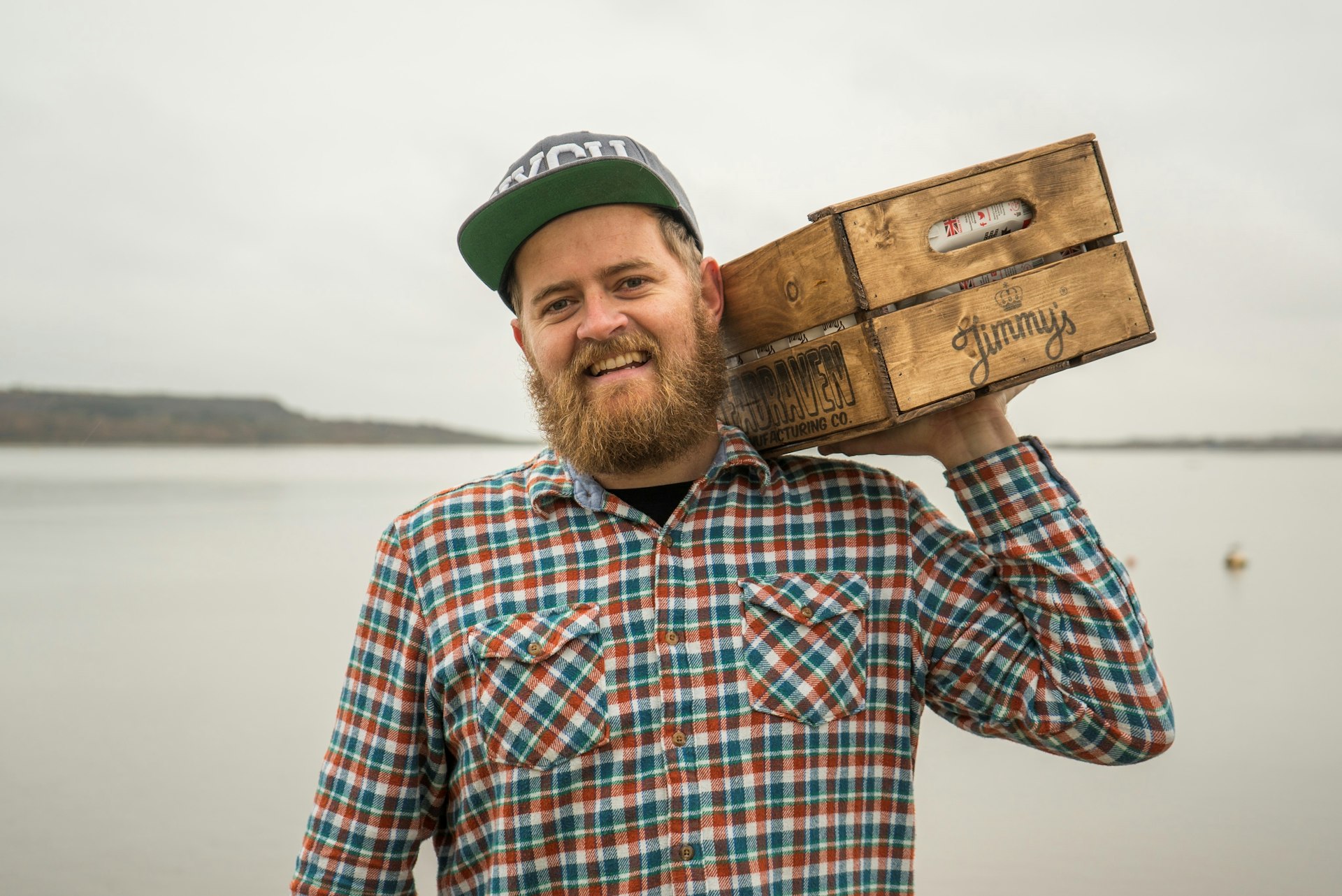
John Booth: illustrator, textile designer and one of only 34 people Joan Rivers followed on Instagram
- Text by Lily Bonesso
John Booth is an illustrator and textile designer whose creations can’t help but make you feel elated. Much of Booth’s work centres around fashion and it’s almost always people-focused. When Christopher Shannon was asked why he chose him to design his prints, the designer said: ‘His work just has a good energy to it, I don’t see a lot of that around.’
I couldn’t agree with this more. I fell in love with Booth’s drawings when he was invited to draw the menswear fashion shows at SHOWstudio. This was live fashion illustration at its best. His instinctive, un-laboured collage techniques combined with painted and drawn elements bring together rough-and-ready textures with luminous colours for a touching sensitivity. Seeing them in the flesh is totally different to seeing them online, because each piece is made up of different layers and textures which make them incredibly tactile.
I continued to follow his work on Instagram and finally found an opportunity to collaborate on this year’s Tate Collectives – a programme which invites emerging artists to respond to the Tate exhibition programme. With the Sonia Delaunay show about to open at Tate Modern, Booth was a perfect fit. Inspired by Delaunay’s quote, ‘Colour is the skin of the world,’ we invited Booth to illustrate in and around the exhibition over two days, observing the visitors and considering how their bodies reframed the work. Delaunay and Booth share a sense of childlike joy in looking and creating, and you can really see this come through in this series.
Here is Booth chatting about Delaunay, colours and scary American teenagers.
Do you feel a connection with Sonia Delaunay as an artist?
Very much so. I was aware of her work prior to this commission but didn’t know the breadth of her practice. Her use of colour in the early portraits really resonates with how I like to draw the body. I also love the persistence of how her hand is clearly visible in all of her work. I don’t use digital drawing technology, I much prefer the marks made by hand, and in her work she uses drawing to reveal her style and to experiment with texture and colour. These are central concerns in my work.
Colour is at the centre of everything you do – have you always worked with such a vivid palette?
Yes, my eye is always drawn to saturated colour and juxtaposition of tones and pigments. I don’t place importance on naturalised or realistic colours, for me drawing is always about a vivid re-imagination.
When you first blew up on Instagram, how was that for you?
I went from nearly 5,000 followers to 85,000 in the space of a fortnight! It was overwhelming and a mixed blessing. I was really happy that my work was being seen by so many people but it also revealed the darker sides of social media. Suddenly I was receiving nonsensical criticism from pre-teens in mid-America. But it also brought with it some useful recognition and new commissions. It remains a really useful platform for me, but with a pinch of salt!
What’s the worst thing someone’s said about your work?
Someone wrote, “If this is done by a mentally retarded child then it’s wonderful, but if not it’s a joke!”
What’s the best thing?
People from all spheres that I admire were suddenly liking and commenting on my work. I was one of the 34 people that Joan Rivers followed!
You mention spontaneity is important to you – how do you ensure that your work retains this element?
I don’t preplan or do a series of preliminary sketches that are then worked over into a final drawing. I make sure I begin with a wide range of materials to hand – I may have a test sheet to see which colour or ink etc is most appropriate but usually its what I feel in the moment.
I like to push myself to carry on drawing in one continuous session until I can stop and be happy with it. And if, at that point, I’m not happy with what I see then I start on another drawing. The finishing of a work for me is like the beginning; it shouldn’t be laboured or overworked, it should arrive in the moment.
What can we look forward to seeing you do in the coming months?
I have a few commissions for magazines, both portraiture and fashion illustration. One particular collaboration is coming up where I get to experiment placing my illustrations on textiles and surfaces that I’ve not previously explored. I’m also continuing to focus on my own personal work, and my teaching practice.
The EY Exhibition: Sonia Delaunay is on at Tate Modern until August 9th 2015.
